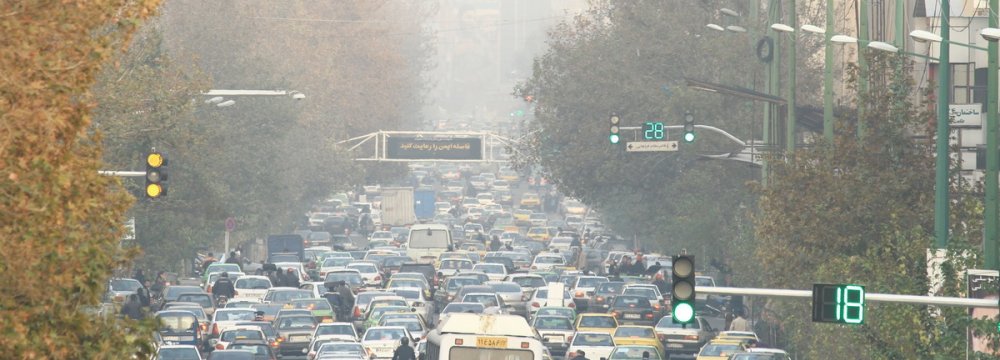Iran has ramped up the distribution of cleaner-burning gasoline in recent years, but wide-scale supplies of low-quality diesel and loose environmental regulations are holding back efforts to rein in persistent air pollution in big cities.
"A lack of regulations on [supply of] standard diesel is one of the primary reasons behind air pollution in metropolises," said Nayyereh Pirouzbakht, the head of Iran National Standards Organization, IRNA reported on Saturday.
Pirouzbakht said her organization and the Department of Environment are planning to make emission standards mandatory for diesel, a polluting fuel that, unlike gasoline, does not meet European emission standards in Iran.
"Iran's gasoline meets the Euro-4 emission standard that is prevalent in the European Union," she said.
Tehran, Tabriz, Isfahan, Mashhad, Shiraz and Karaj are some of the major cities that receive Euro-4 quality gasoline, with plans in place to expand the sale of high-grade fuel in all Iranian cities within three years.
According to official data, close to 80 million liters of gasoline and 40 million liters of diesel are burned daily in Iran.
"The Oil Ministry has acknowledged the gap between Iran's diesel quality with European standards … Using this fuel in heavy-duty vehicles has increased pollution several times higher in large cities," the official said.
Gasoline is sold at 10,000 rials (about 25 cents) per liter while diesel price is less than one-third.
Every year, Tehran and other big cities are blanketed with thick smog that forces officials to frequently shut down schools and public places, and urge people with respiratory problems and heart conditions to stay indoors.
The pollution is intensified in the cold season due to an atmospheric condition known as temperature inversion in which toxic particulate matters are trapped close to the ground.
Pirouzbakht added that truck movements at night, especially dilapidated ones, and the expansion of high-rises contribute to urban pollution.
Experts say skyscrapers trap the heat and block the winds that should clear airborne pollutants.
Waves of new construction have seen Tehran, a city of more than 8 million people, rapidly stretching from all fronts, with a belt of tall buildings particularly sticking out across the roads to the west and east of the capital.
Aging Fleet
An aging fleet of vehicles that requires immediate renovation is also bearing down on the climatic malaise.
According to Abbas Akhoundi, the roads minister, around 127,000 vehicles 35 years and older are still on the roads.
"Dilapidated trucks in Iran are estimated to produce 30 times more harmful emissions than new models," Rasoul Mohammad-Sadeghi, chief executive officer of Saipa Diesel Company, the trucks and trailers division of Iran's second carmaker SAIPA, said.
"The financial cost of pollution in Iran amounts to a whopping $16 billion annually," he added, referring to data by the World Health Organization.
Iran's auto market is dominated by fossil fuel cars and despite a small but promising rise in the number of hybrid vehicles, the country has taken no actionable measure to promote electric cars or expand their infrastructure.











Add new comment
Read our comment policy before posting your viewpoints